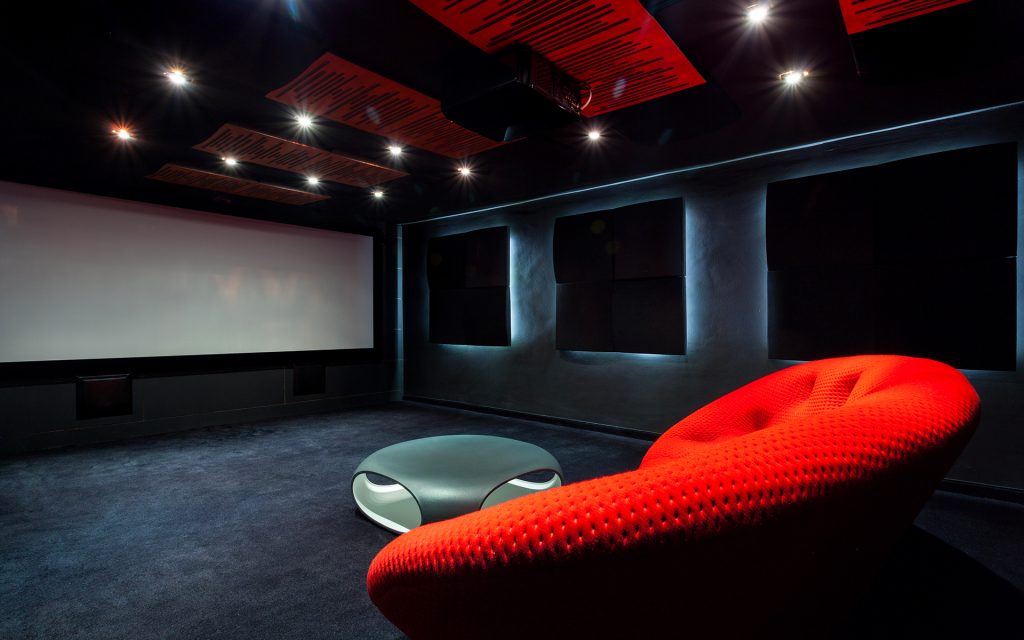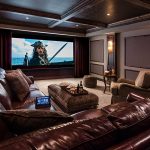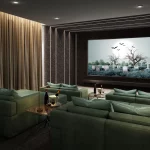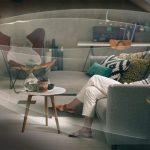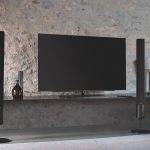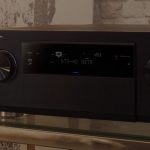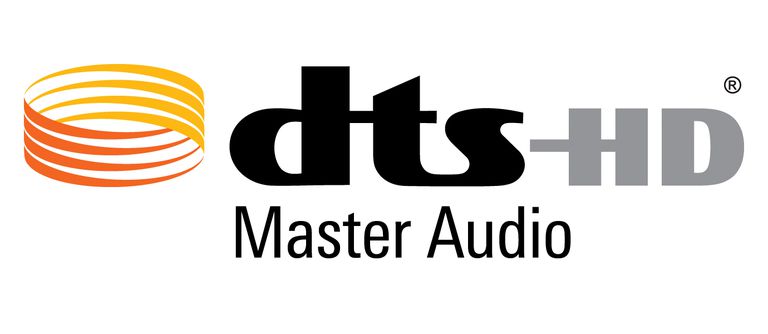Choosing the most suitable projection screen for one’s home theater is a fundamental step but one that is too often underestimated by those approaching the world of projectors for the first time. In fact, no home theater can be truly complete if, in addition to video equipment, it does not also have an adequate surface on which to focus the light beam. The problem is complex: What kind of screen to choose, with what size and how much gain? And how to solve it if, for example, one does not have a dedicated wall? And what color is best?
Before answering all these questions, we must pause for a moment to demolish two very common but mistaken preconceived ideas. First, it is not true that the curtain is so marginal in the design of a room: it is imperative to understand that even excellent projection quality will yield disappointing end results if the projection curtain is of poor materials.
Moreover, many people put all their eggs in the projector basket at the expense of the curtain, thinking that sooner or later they will replace the latter with a new, perhaps better one. In reality, the curtain lasts for years, while it is really the projector that will abandon you first.
As a general rule, we tend to use panels that are specially made of reflective materials and have a very thin structure, but not all projection screens are the same, and it is important to pay attention to several features before proceeding with any purchase. Let’s talk specifically about such things as:
Types of Screens

There are many types of projection screens, one for each particular need, and it is important to choose wisely because they greatly affect both the overall budget and the final output.
Here are them succinctly:
- FIXED SCREENS: A popular choice for commercial businesses and virtually mandatory for home theaters, since it consists of a permanent solution attached to a wall. It is very good value for money, but since it cannot be rolled up, it always remains visible. So it needs to be planned well.
- Motorized Screens: They remain hidden all the time and, only when needed, can drop from the ceiling or rise from below with a click or voice command. This is a very elegant non-invasive solution, perfect for mixed environments and home cinema rooms, but also for attics, yachts, boats, theaters, cinemas. And for those who cannot rely on a dedicated wall.
- Tensioned Screens: These are characterized by the presence of a tensioning cable inserted into the sides of the canvas that keeps the canvas flat, eliminating any hollowing or ripple phenomenon. Due to the near-perfect flatness of the video projection surface, they are particularly suitable for high-end home cinema and professional installations.
- Framed Screens: This is a type of fixed screen, the peculiarity of which is that it is mounted on a rigid perimeter frame, usually made of aluminum; this ensures excellent flatness of the canvas. Depending on the models and technologies adopted, the screen can be anchored to the frame by tensioning it with elastic bands, or with snap buttons. They are available in all sizes and formats, and can be rested on the ground by means of special standing supports. In the most elegant models, the canvas is attached at the front, thus covering the black frame. This is a must-have choice in a home theater.
- Recessed Screens: These are motorized projection screens mounted concealed in the ceiling. A special cassette allows the screen to be attached directly to the ceiling with special tie rods, so when the screen is rewound, it disappears altogether, leaving only a thin mask in view. Variants with tensioned curtain allow for sophisticated and very elegant home cinema systems. The solution is available in all formats, from 1:1 to 16:10.
- Tripod Screens: Featuring a three-legged stand, these portable projectors are perfect for schools or mobile presentations.
Size and Placement
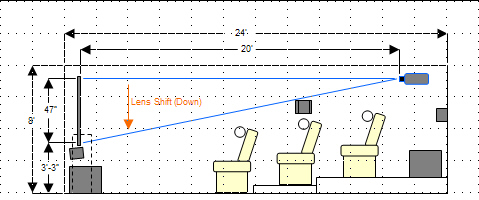
In general, the screen always has a base that is about one and a half to two times the viewing distance; this allows for an adequately large image and an immersive experience without, however, stressing the eyes. In the case of multiple seats, however, it is a good rule of thumb that the width of the projection screen should be at least ⅙ of the distance between the screen and the last row. Of course, rather than an immutable rule this is just a good compromise; then it is always necessary to let the expert make his or her own assessments based on the overall design.
As for the height of the screen, however, it should be calibrated so as not to fatigue the user; an image shifted too far up or down from the viewer’s line of sight in the long run creates eye and neck fatigue, reducing overall comfort. A good rule of thumb to start with might be placing the screen about 90 to 125 cm from the ground, with a viewer viewing angle between 10° and 15°; but again, as mentioned, it is up to the expert to decide to deviate based on other factors.
Screen Gain

The term Gain factor refers to the degree to which a screen reflects light; usually, this value ranges between 1.0 and 1.5 and is very simple to understand. The higher it is, the better the performance of the material of which it is made. But beware: as the Gain factor increases, in fact, the viewing angle decreases. This means that viewers in the center of the screen will enjoy significantly higher contrast, compared to a hypothetical viewer on the sides of the room.
For a rear projection screen, on the other hand, a Gain factor greater than 2 is required, so that light from the projector can pass through.
Separate discussion for ALR Projection Drapes. These are projection screens that have a structure with semi-pyramidal section elements that absorb and at the same time diffuse a lot of light. They are usually combined with so-called ultra-short-range projectors (i.e., with UST optics), which are capable of projecting an image from a distance of 40 centimeters to 2 meters. The result of this ensamble is an incredibly high contrast ratio even in very brightly lit environments.
Screen Format
There are screens on the market with different formats: 1:1 for example, but also 4:3, 16:10 and the popular 16:9; the choice falls on one or the other depending on the projector’s native format. And so, very trivially, in the case of a projector with Full HD (1920 X 1080), HD ready (1280 x 720) and 4K (3840 x 2160) resolutions it will definitely be convenient to jump on a 16:9 format.
16:10 is best suited to WXGA (1280 x 800) and WUXGA (1920 x 1200) projectors, where the others are used in specific contexts; for example, 1:1 is perfect in school settings for overhead projectors.
In the best home theaters, screens are also equipped with masking, a technique that allows the projection surface to be changed according to the format of the projected images. This means that, for example, when watching a 16:9 movie, the frame shrinks in height and increases in width to fit the 2.35:1 CinemaScope.
Screen Color
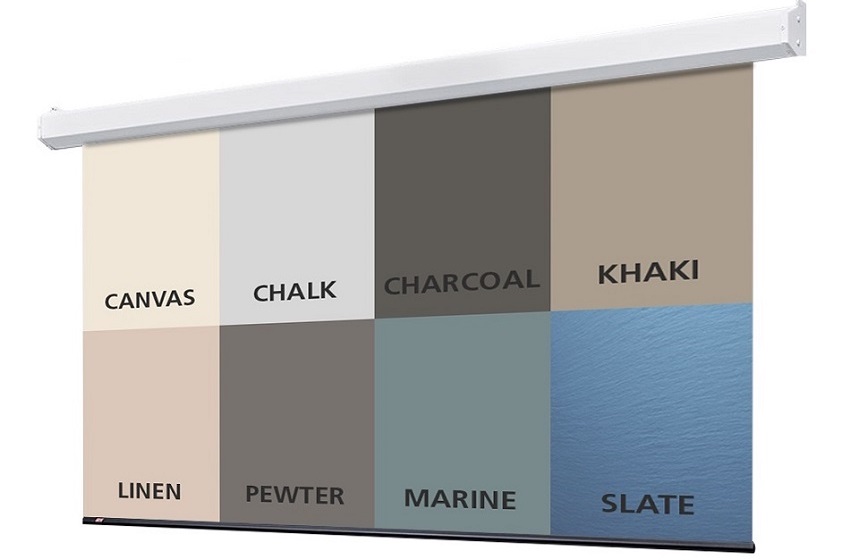
A screen can be white or gray, and treated to increase reflected light (the Gain). The choice of one or the other depends on the type of light in the room.
One tends to prefer a white screen in rooms with optimal and total control of ambient brightness, and in conjunction with a high-contrast projector.
A gray screen, on the other hand, absorbs incidental ambient light better and prevents light from escaping into darker areas; this contributes to excellent overall contrast and to maintaining high black levels. For whites to remain up to par, however, it will be necessary to adopt a projector with excellent brightness (most digital projectors will do just fine).
Screen Material
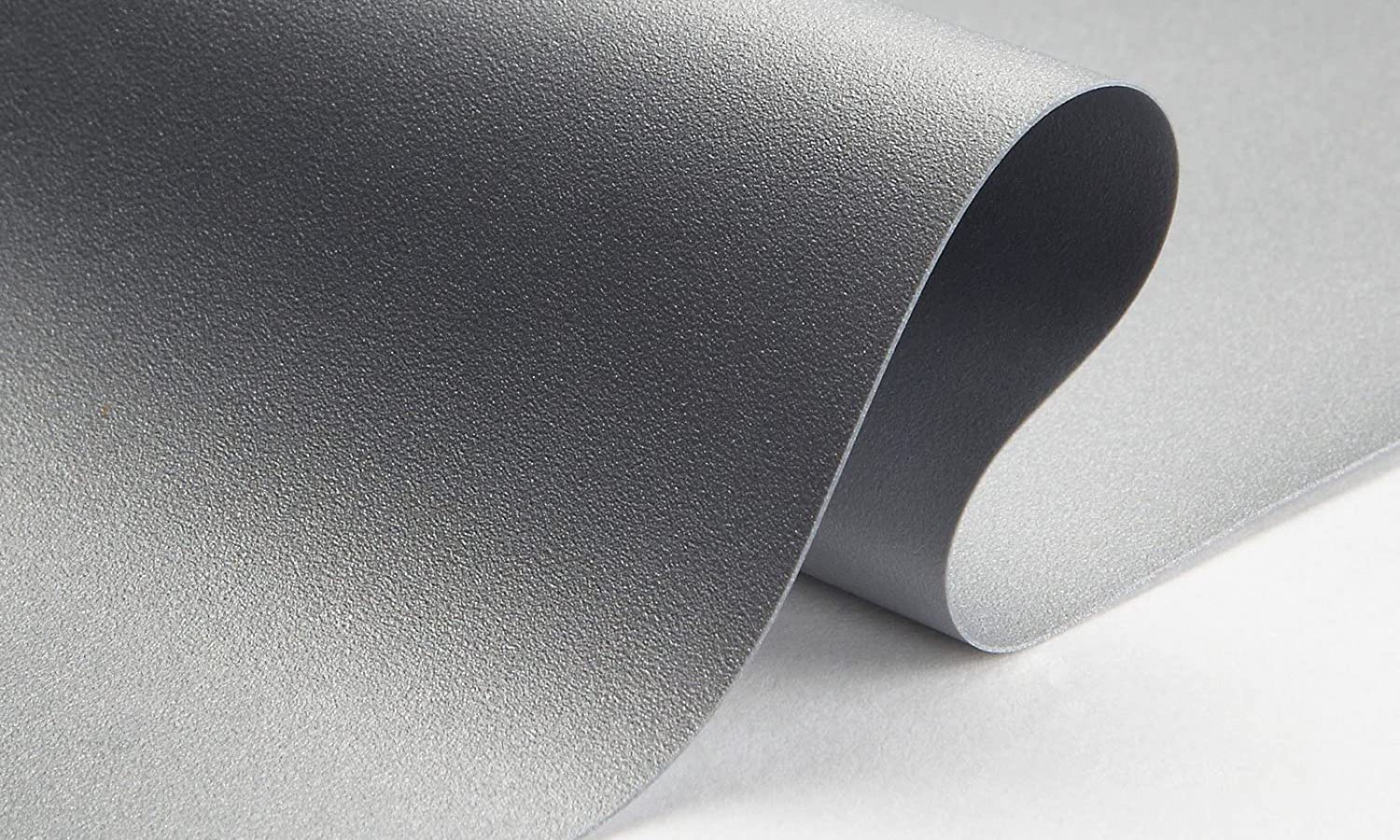
The material from which the projection cloth is made is also extremely important. Plasticized PVC is the most common, but sometimes, depending on the home theater configuration, fabric as in the cinema or fiberglass is preferred.
In movie theaters (including private ones), it would be good practice to embed the LCR 3 front speakers always on the back of the screen; however, this requires the use of sound-transparent sheeting, that is, capable of letting sound pass through without obstructing it. To achieve the purpose with the cheaper PVC, it becomes necessary to resort to so-called perforation, or micro-perforation. The sheeting, in other words, is studded with tiny holes less than 0.3mm in diameter that allow sound vibrations to pass through.
This solution is very practical and economical, but it brings with it some trade-offs: in addition to sound, in fact, it also filters out the light on the back, which in turn bounces back and returns, creating an annoying splitting of the image (Moiré effect); in addition, the temperature of the video is also altered. The solution is to adopt an additional black sound-translucent fabric.
If the budget allows, however, it is possible to turn to carbon fiber cloths (with THX certification), which instead natively boast near-ideal performance: they let sound through without any kind of loss and, above all, without distortion.
Maintenance of projector drapes
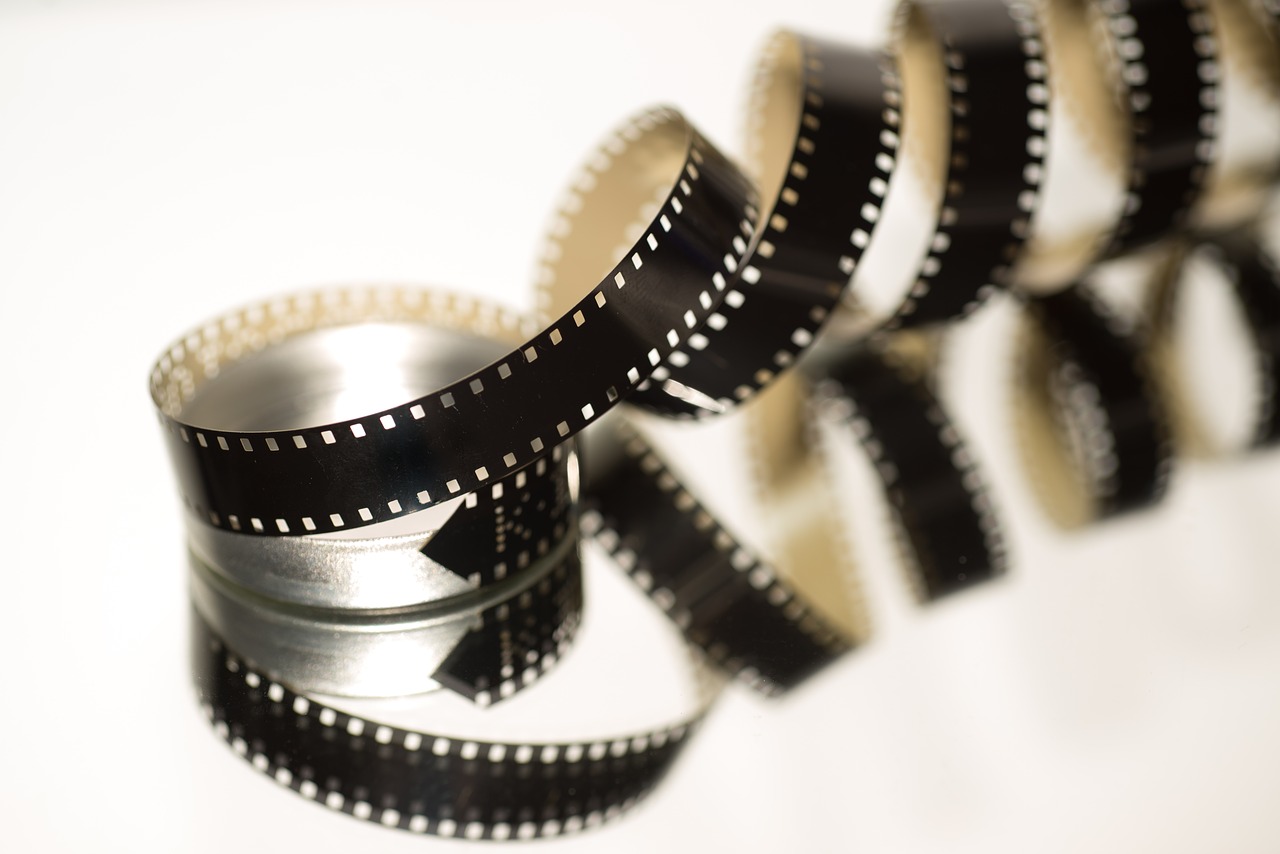
Exterior or interior projection screens are subject to different wear and conditions; stains, fingerprints or dust accumulation can detract from the visual quality. How to adjust for cleaning in these cases? In general, a soft-bristled brush should provide a sufficient degree of abrasion to get rid of lint, fluff and dust; a soft, slightly dampened cloth may also be fine. The use of surface cleaning products, properly diluted, is not discouraged in the worst cases, but in the case of chemicals it is always advisable to check the manufacturer’s directions.
In any case, always avoid alcohol or solvents that risk compromising the integrity of the color on the cloth surface.
Sometimes, manually or automatically operated cloths can create small creases or folds; at these junctures it may be advisable to fully stretch the cloth and soften the folds with the help of a medium-hot air dryer. The optimum, however, is to first check the instructions provided by the manufacturer, or alternatively to hear from an expert.

